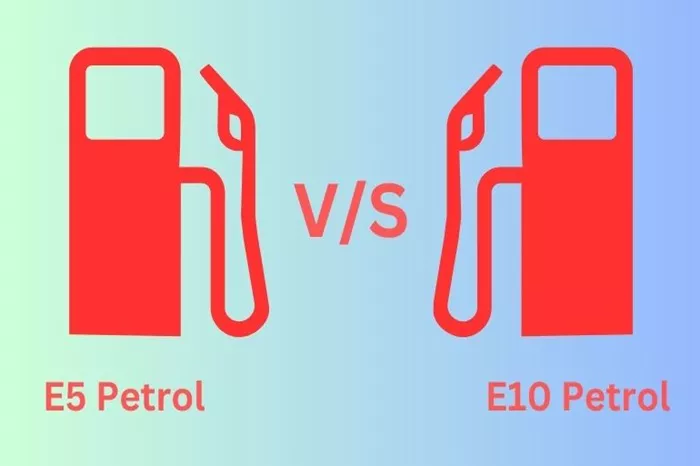As the push for more environmentally friendly fuels increases, many drivers are becoming familiar with ethanol-blended fuels like E5 and E10. These fuels contain ethanol, a renewable resource that helps reduce carbon emissions. However, questions often arise about whether these two fuels can be mixed. This article explores what E5 and E10 fuels are, their compatibility, and the potential effects of mixing them in a vehicle’s fuel system.
What Are E5 and E10 Fuels?
Ethanol Blends Explained
Ethanol-blended fuels are common in many countries as part of efforts to reduce dependence on fossil fuels and lower greenhouse gas emissions. The “E” in E5 and E10 stands for ethanol, while the number represents the percentage of ethanol in the fuel.
E5 Fuel
Composition and Characteristics
E5 fuel contains 5% ethanol and 95% gasoline. It is widely used and accepted in many vehicles without requiring any engine modifications. E5 fuel helps reduce harmful emissions and supports the use of renewable energy sources.
E10 Fuel
Composition and Characteristics
E10 fuel contains 10% ethanol and 90% gasoline. This blend has a slightly higher ethanol content than E5, offering even greater environmental benefits. Many modern vehicles are designed to run efficiently on E10 fuel.
Compatibility of E5 and E10 Fuels
Engine Design and Manufacturer Recommendations
Vehicle manufacturers design engines to run on specific types of fuel. Most modern vehicles can handle ethanol blends up to E10 without any issues. It is important to consult the vehicle’s owner manual or manufacturer recommendations to ensure compatibility.
Mixing E5 and E10
Is Mixing Safe?
In general, mixing E5 and E10 fuels is safe for most vehicles. Since both fuels contain ethanol and gasoline, they are compatible with each other. The mixture will have an ethanol content somewhere between 5% and 10%, depending on the proportions of E5 and E10 used.
Potential Effects of Mixing
Impact on Engine Performance
Mixing E5 and E10 fuels should not significantly impact engine performance. The slight increase or decrease in ethanol content is generally within the tolerances that most engines can handle. Drivers are unlikely to notice any difference in how the vehicle runs.
Fuel Economy
Ethanol has a lower energy content than gasoline, which can slightly reduce fuel economy. However, the difference between E5 and E10 is minimal, so mixing these fuels should not cause a noticeable change in fuel efficiency.
See also: Is E10 Fuel Better For The Environment?
Benefits of Ethanol-Blended Fuels
Environmental Advantages
One of the primary benefits of using ethanol-blended fuels like E5 and E10 is their positive impact on the environment. Ethanol is a renewable resource that helps reduce greenhouse gas emissions. Using these blends supports the transition to more sustainable energy sources.
Reduced Emissions
Cleaner Combustion
Ethanol-blended fuels burn cleaner than pure gasoline, resulting in lower emissions of pollutants such as carbon monoxide, nitrogen oxides, and particulate matter. This contributes to improved air quality and public health.
Renewable Resource
Supporting Agriculture
Ethanol is produced from crops like corn, sugarcane, and other biomass. Using ethanol-blended fuels supports the agricultural industry and promotes the use of renewable resources. This reduces dependency on finite fossil fuels.
Potential Drawbacks of Ethanol-Blended Fuels
Energy Content
Ethanol has a lower energy content than gasoline, meaning that ethanol-blended fuels can result in slightly lower fuel economy. This is a minor drawback for most drivers but is important to consider when calculating fuel costs.
Water Absorption
Hygroscopic Nature
Ethanol is hygroscopic, meaning it absorbs water from the air. Over time, this can lead to water contamination in the fuel tank, which can cause issues such as corrosion and poor engine performance. Regular use and proper storage can mitigate these risks.
Older Vehicles
Compatibility Issues
Older vehicles, particularly those made before the 2000s, may not be designed to handle ethanol-blended fuels. Rubber seals, gaskets, and other components can degrade when exposed to ethanol. It is essential to check manufacturer guidelines for older vehicles.
Practical Tips for Using E5 and E10 Fuels
Consult the Owner’s Manual
Before using E5 or E10 fuels, consult the vehicle’s owner manual to ensure compatibility. Manufacturers provide specific recommendations for fuel types based on engine design and performance requirements.
Regular Maintenance
Preventive Care
Regular maintenance is crucial for any vehicle, especially when using ethanol-blended fuels. This includes checking fuel filters, monitoring for any signs of corrosion, and ensuring the fuel system is clean and functioning properly.
Fuel Storage
Proper Storage Techniques
When storing vehicles for extended periods, take precautions to prevent water contamination in the fuel tank. Keep the tank as full as possible to minimize air space where moisture can accumulate. Using fuel stabilizers can also help maintain fuel quality.
Future of Ethanol-Blended Fuels
Increasing Ethanol Content
As technology advances and the push for renewable energy grows, higher ethanol blends may become more common. E15, E20, and even E85 fuels are already available in some markets, offering greater environmental benefits.
Vehicle Adaptation
Engine Design Improvements
Vehicle manufacturers continue to design engines that can handle higher ethanol content efficiently. Flexible Fuel Vehicles (FFVs) can run on gasoline or any ethanol blend up to E85, providing more options for drivers.
Policy and Incentives
Government Support
Government policies and incentives play a crucial role in promoting ethanol-blended fuels. Subsidies, tax credits, and renewable fuel standards encourage the production and use of these fuels, supporting the transition to a more sustainable energy future.
Conclusion
Mixing E5 and E10 fuels is generally safe and should not cause significant issues for most modern vehicles. These ethanol-blended fuels offer environmental benefits, including reduced emissions and support for renewable resources. While there are minor drawbacks, such as slightly lower fuel economy and potential compatibility issues with older vehicles, the advantages outweigh the concerns for many drivers. By understanding the characteristics and proper use of E5 and E10 fuels, drivers can make informed choices that support both their vehicle’s performance and environmental sustainability.
Related topics:

